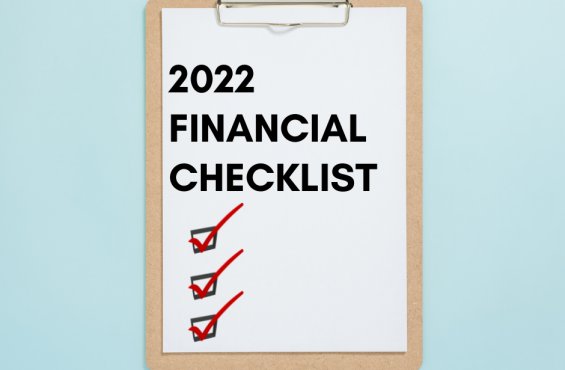How do you know if you’re in good financial shape? Investors often review how their portfolio performed each year and consider if there are any changes they should make to their investments, but your financial well-being goes beyond stocks and bonds.
Here are six items that should be part of your annual financial check-up.
1. Cash balances
Do you have enough in cash to cover your costs in case of an emergency (or in case of a market decline) or do you need to replenish your cash reserves? Review the interest you’re earning on your cash and see if you could get a better rate at a higher-interest online savings bank.
2. Cash flow
It’s always good to keep a tab on your spending rate. Did you spend more than you had planned last year, and what is the plan for 2022? With higher inflation and cost of goods on the rise, consider how this affects your spending rate.
3. Reassess your allocation to stocks and bonds
Do you need to rebalance or adjust your allocation? If you are retired and taking required minimum distributions (RMDs), your RMD could have impacted your overall account and portfolio allocation. Connect with your investment advisor to confirm that your investment allocation is still appropriate for your needs. Would it make sense to consider diversifying into alternative funds, which tend to be less correlated to stocks or bonds?
4. Tax adjustments
Before tax time, discuss your income and potential tax bill with your CPA and talk with your investment advisor if you need to raise cash to pay your taxes.
The new calendar year can be an opportunity to harvest gains or losses. Review unrealized gains/losses in your taxable accounts with your advisor and come up with a plan. With our wealth management clients, we look to harvest tax losses at year-end and throughout the year in an effort to manage our clients’ taxable accounts efficiently.
5. Update your withholdings
You can contribute more to your retirement accounts this year. You can now contribute a maximum of $20,500 into your 401(k), 403(b) or 457 plans in 2022 (versus $19,500 in 2021). If you are age 50 or older, you can contribute an additional $6,500 to your plan. If you are making automated contributions from your paycheck, this is a good time to review and adjust your contributions based on the higher limits this year.
For retirees, consider your new required minimum distribution (RMD) number. If you take your RMD monthly, review the amount that should be distributed starting in January and adjust your tax withholdings, if needed.
6. Optimal debt rates
Review your debts, if any. If you have a mortgage, is the interest rate on your loan higher than the current refinance rates? Consider a refinance analysis to see what is best for your situation. Look for opportunities to consolidate your debts for lower-cost loans and/or better interest rates.
This is all part of financial planning
Financial planning looks at your whole financial picture. Your financial planner can provide an annual review of your overall financial plans, which typically includes reviewing and tracking your goals, cash flow, savings strategy, debt, investment assets, allocation, insurance, and estate plan recap. This process is designed to help you determine if you need to adjust your investments based on your income needs, financial goals, and/or life changes and make sure you are on a successful long-term path.
Need help developing and updating your financial plans? Talk with a FundX advisor and let’s see if we can help you move forward.
